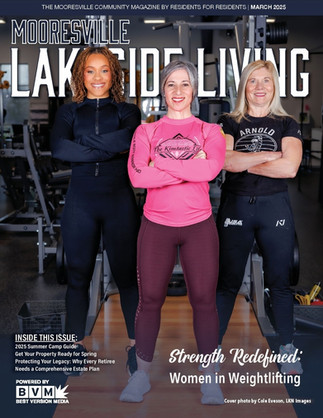Understanding the Shopping Radius for Marketing Purposes: How Far Do People Travel to Shop?
- Wix Next Wave Services
- Mar 20
- 2 min read

The shopping radius—the distance people are willing to travel to shop—varies based on several factors, including location, the type of purchase, convenience, and personal preferences. While online shopping has transformed consumer behavior, physical stores remain essential for everyday essentials and immersive shopping experiences.
Understanding how far people are willing to travel can help businesses optimize store locations and marketing strategies. The best target audience for local small businesses are the people in your immediate vicinity and reaching these consumers with targeted, repetitious marketing is key.
The type of purchase plays a significant role in determining shopping distance. For everyday essentials such as food and everyday items, consumers generally prefer stores and restaurants within a short distance from their homes. However, when shopping for specialty or luxury items, such as electronics, designer fashion, or unique home decor, shoppers are often willing to travel farther to find exactly what they want.
Geography also impacts shopping habits. In urban areas, where stores are densely packed and easily accessible, most shopping occurs within a one-to-five-mile radius. City dwellers rely on convenience and often have multiple retail options within walking distance or a short commute. In suburban settings, shopping distances extend further, typically ranging between five to fifteen miles, as consumers navigate larger shopping centers and big-box retailers. Meanwhile, in rural areas, where retail options are sparse, residents may travel twenty to fifty miles or more for major shopping trips, often planning visits in advance to stock up on necessities.
Shopping experiences themselves can influence how far people are willing to travel. Large malls, premium outlets, and flagship stores have the power to draw shoppers from considerable distances. These destinations offer a variety of brands and entertainment options that make the trip worthwhile. Consumers also travel for unique shopping experiences, such as specialty markets, exclusive boutiques, or limited-time pop-up stores that aren’t available in their local area but most consumers stay close to home, shopping in a 0-10 mile radius for most items.
The rise of online shopping has further transformed traditional shopping habits. E-commerce allows consumers to shop globally from the comfort of their homes, significantly expanding their access to products. Despite this shift, many people still prefer in-store shopping for categories like clothing, where they can try items on, or groceries, where they can inspect quality and freshness before purchasing, and many want to support locally owned retailers and restaurants by eating and shopping in their communities as much as possible.
Retailers are adapting to these changing behaviors by expanding services such as local delivery and curbside pickup, reducing the need for travel. Many businesses are also strategically opening new locations to decrease shopping distances for suburban and rural consumers. At the same time, stores are enhancing in-person experiences, offering personalized services and interactive features that entice customers to visit.
Ultimately, while shopping radius varies based on multiple factors, convenience remains a key driver. Local shopping is the go-to for daily necessities and marketing in a tight, local radius is important to remember for local retailers and restaurants. The best place to focus your marketing is in your own backyard.
Lakeside Living Magazines help Lake Norman businesses to do just that.













